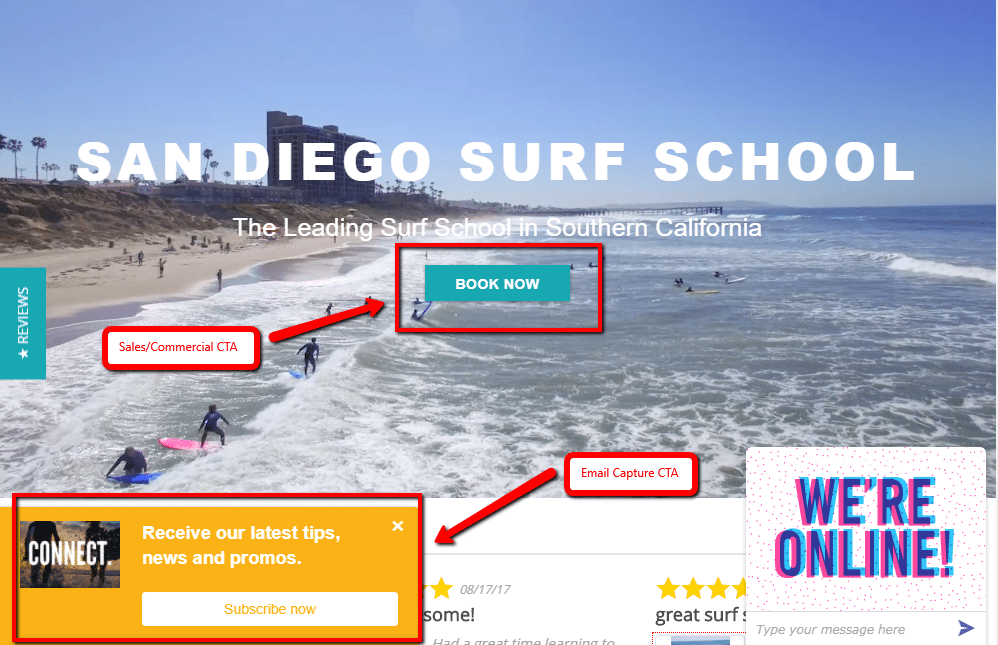For many startups, a website is the main portal of interaction with a potential customer. For social entrepreneurs, a solid website experience can sometimes mean the difference between a potential donor committing to the organization or continuing to shop around for other philanthropic opportunities. Earning new traffic to your website is often a difficult endeavor and websites should first look to optimize the traffic they are already receiving.
We are now entering the world of Conversion Rate Optimization.
CRO (Conversion Rate Optimization) is the effort to increase the percentage of site visitors who turn into purchasers. From business blogs to commercial pages, this process is completed using a combination of analytics and user feedback to increase website performance. While CRO can be used to improve any key performance indicators (KPIs) on your site, it is often associated with acquiring new customers, registrations, downloads, and other “lead generation” conversions.
Why CRO is Important
There are three key reasons why CRO is important for the success of your company or organization’s website. To start, and at the very least, CRO can help to ensure that you are measuring and actively trying to increase conversions.
CRO is also more cost-effective than trying to constantly find new traffic. New marketing strategies, especially if they do not yield the best results, can be an expensive way to discover what doesn’t work. Working to get the current traffic more engaged is a much more cost-effective approach for those with a tight budget.
Finally, and most importantly, CRO can help grow your return on investment. CRO can be implemented on past website projects to boost long-term ROI. This is extremely important when marketing dollars are tight. To read more about the benefits of CRO check out this resource, from the Ecommerce Training Academy.
Here are some key tips for cultivating effective CRO campaigns:Decide on Goals
Keep in mind that 100% growth year over year is not always a realistic goal. Set goals that you are able to achieve in reasonable amounts of time. Reevaluate those goals regularly and add to them as your original goals are reached.
In addition, marketing teams should have a clear idea of what a successful conversion means to their company or organization. Is it obtaining an email from a potential donor, a call for an initial consultation, or an actual purchase or contract? Successful conversions vary by industry, which is why it is important for you to have a clear definition in mind before sitting down to evaluate your progress.
You can even have various types of “conversions.” on your site. Just set goals for each individual conversion type that your team identified as important.
Let’s look at two examples of conversion types. They both come from The San Diego Surf School, a local surfing academy in my neighborhood:
You can see two main CTAs (Call to Actions) focusing on different conversions. The first is a classic sale conversion goal with the “book now” button and the second is an email capture target with the blog subscription. Each of these goals is important for driving the business and a company or organization trying to monetize, must have a clear idea of the goals before moving forward.
Collect Data
In order to measure progress, it is important that your Google analytics (or other tracking metrics) are set up properly. Moz has a great guide for beginners that you can find here. For the purposes of CRO, you need to understand the following questions (at the very least):
- Where are my visitors coming from?
- Am I tracking conversion metrics?
- What pages are generating these conversions?
Be sure to keep in mind here that the entry page (the place the user first entered your site on) may not necessarily be the final place for a “purchase”, donation, email collection, etc. This is where attribution data comes into play, as you want to make sure the right page gets credit for a conversion.
Say you have an “add to cart” button on your entry page that looks something like this:
Source: VitaMedica.comThis button will take the user (almost always) to another page to finish the checkout. If this button or page is not being tracked properly in GA, the entry page will not get “credit” for this purchase.
This is an easy tracking example. It gets a bit trickier when users cruise your site and click around before making a conversion.
Say you have a blog with internal links back to a product or donation page. If a user lands on the blog, clicks a product page, and makes the purchase, what page should get credit? They both do, technically. The blog page gets credit as the landing page and the product page gets the “conversion” credit because it was the pre-purchase page. This can cause a bit of mess in your analytics if not tracked properly. This can be rectified with a few changes in Google Analytics. A great article from Kissmetrics on this topic can be found here.
Start Your CRO with Small Changes
Don’t overthink your initial tests. It can be as simple as trying different colors on a button to changing up the copy on a page with a lot of traffic. While A/B testing is usually the way to go about this process, testing a few things at a time makes it easier for your team to gauge what makes an impact. After the results of the test are in, you can employ those tactics on other parts of the website. In addition, localizing your test to a small portion of the site helps your team avoid the damage from an ineffective (or even hurtful) change.
Once the team has decided what to test, you need to find a good testing tool. There are literally hundreds of CRO tools available, both paid and free. If you have the budget, we love Unbounce. If you are just getting started and need to save money, there are many free tools to try.
Here is a great list of tools to check out: http://www.toprankblog.com/2016/07/conversion-rate-optimization-tools/
Pro Tip: Take advantage of Google’s tag manager by placing tags throughout your website for tracking and A/B Testing.
Test, Analyze, Repeat
Of course, it doesn’t do much good to set up all of these tools, make all of the changes on the site, and then not analyze the data. Long-term results will only be as good as your ability to interpret the data and adjust the approach.
One thing is certain in today’s marketing world, trends change quickly and a marketing team needs to stay ahead of the curve. Don’t assume because something is returning a lot of conversions today, that it will continue to perform well a month from now. Continue to test new ideas, analyze the results, and repeat.
Bonus Tips
- Data from Facebook advertising and Google Adwords can help a marketing team decide on effective Take the data from these platforms (if you leverage them) and use it in your CRO campaigns.
- Exit popups are winners! Have an exit CTA for users attempting to leave your site. These exit CTA’s don’t take much to employ and can help squeeze out a few additional leads. EtailPro has a great article on the topic here.
- Leverage blog content in a CRO campaign. Blog content doesn’t have a high conversion rate, but it does create is more traffic and loyal followers. In addition, many companies and organizations can benefit from creating a “learn” or “expertise” portal that provides solid informational content. This is often received better for those looking for information then content on a blog. Check out these two examples, both in the skincare industry:
Without even clicking on the links, one seems much more professional than the other. After users enter your portal, you can feed them both blog content, research pieces, and other sales content.
Final Thoughts
CRO is often seen as an expensive and “expert only” tactic that often scares many entrepreneurs. A marketing team does not need to spend $10,000+ on a campaign to see positive results. From crowdfunded businesses to bootstrap startups, with the right analytics, clear goals, a few small tests, and a creative marketing team, your website should start seeing some positive results in no time!
Samuel Wheeler is a digital business consultant for Inseev Interactive. Since graduating from Northwestern in 2012, Sam has worked for fortune 500 companies and small start-ups, focusing on public relations, digital marketing, and search engine optimization. He is also the author of What is Link Juice? a resource for businesses on the benefit of link equity and internal linking. When Sam is not surfing the web, you can find him in the ocean off the coast of San Diego, surfing the waves.




















